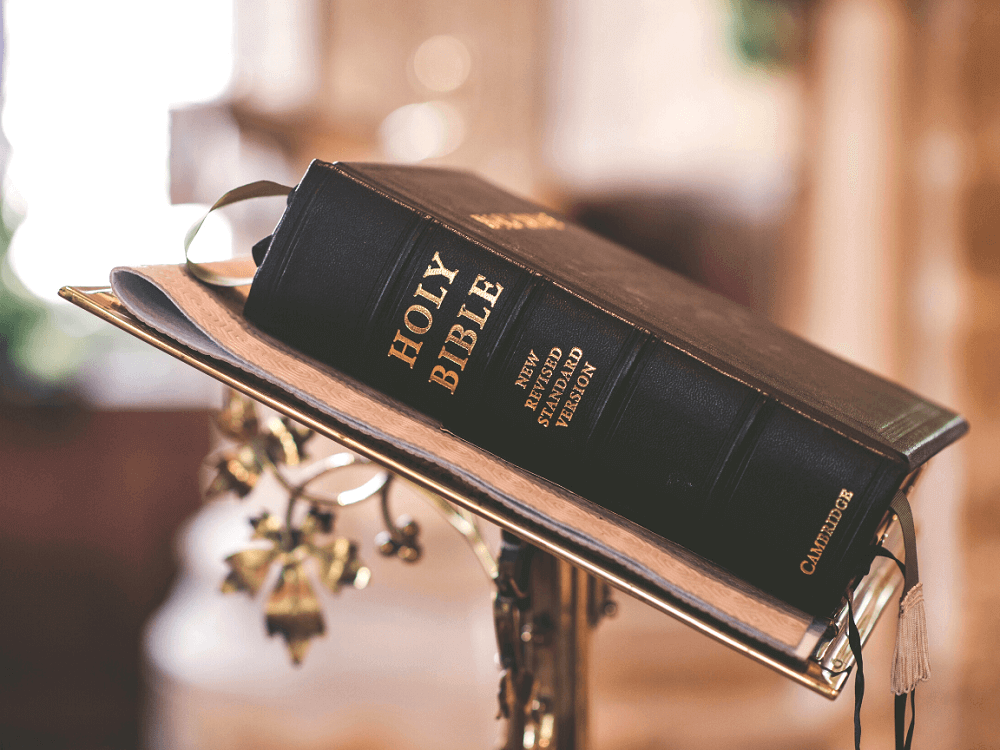In redefining the sonic dimensions of your music, drawing inspiration from diverse global musical styles can be an exciting and rewarding process.
Broadening your musical palette is a crucial element of this exploration.
Now, imagine infusing your compositions with sun-soaked melodies, rhythmically nuanced beats, and chordal richness that is reminiscent of the beachside samba.
This can be achieved by exploring Bossa Nova’s unique harmonic structures.
Originating from Brazil, Bossa Nova’s characteristically rich chord progressions can enhance your musical expression, unveiling a fresh layer of sophisticated ambience.
In this article, we will delve into these intricate progressions, guiding you on how to seamlessly incorporate them into your own music.
Table of Contents
- Bossa Nova Chord Progressions
- I – IV – ii – V (1 – 4 – 2 – 5)
- I – iii – vi – ii (1 – 3 – 6 – 2)
- I – vi – IV – V (1 – 6 – 4 – 5)
- iii – IV – ii – I (3 – 4 – 2 – 1)
- I – IV – bVII – V – I (1 – 4 – b7 – 5 – 1)
- vi – V – IV – iii (6 – 5 – 4 – 3)
- IV – V – iii – ii (4 – 5 – 3 – 2)
- I – vii° – vi – V (1 – 7 – 6 – 5)
- I – iii – vi – IV – ii – V – I (1 – 3 – 6 – 4 – 2 – 5 – 1)
- V – IV – I – vi (5 – 4 – 1 – 6)
- vi – ii – V – I (6 – 2 – 5 – 1)
- I – IV – vii° – iii (1 – 4 – 7 – 3)
- ii – V – I – IV (2 – 5 – 1 – 4)
- I – vi – ii – V (1 – 6 – 2 – 5)
- I – vi – iii – IV (1 – 6 – 3 – 4)
- The Bottom Line
Bossa Nova Chord Progressions
I – IV – ii – V (1 – 4 – 2 – 5)
This progression captures the soulful, breezy essence of Bossa Nova music.
This chord progression, I – IV – ii – V, is a classic in Bossa Nova music, acting as the rhythmic backbone to inject the unique Brazilian feel. Known for its rich, soothing harmony, this progression is the key to recreating the intricate melodious sound of authentic Bossa Nova.
- Difficulty: Intermediate
- Example: C – F – Dm – G (Key of C)
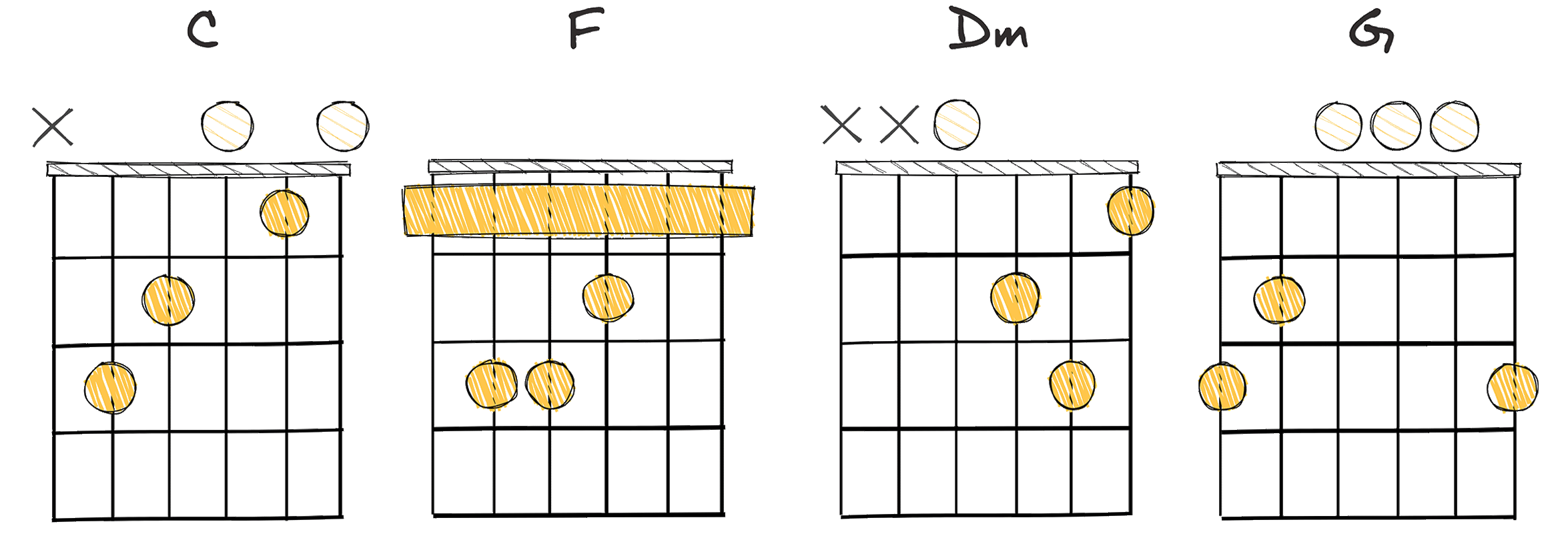
Known for its characteristic rhythmic patterns, the genre of Bossa Nova has inarguably impacted the sound of music both within and beyond Brazil’s borders.
At the heart of this iconic style lie key chord progressions that lend Bossa Nova its distinctive sound.
One such progression is the I – IV – ii – V, corresponding to C Major – F Major – D minor – G Major in the key of C Major.
This particular sequence is not only common in Bossa Nova, but also forms the backbone of many jazz standards.
Thus, if you aim to infuse a touch of the tropical into your compositions, understanding and incorporating this chord progression can be invaluable.
In support of the above statement, the I – IV – ii – V progression lends itself well to various rhythmic interpretations which is significantly suitable to the uniqueness of Bossa Nova.
Moreover, the progression’s wistful and jazzy quality underpins the definitive Bossa Nova ambience.
The I – IV – ii – V progression dates back to the 1950s and 1960s, the golden age of Bossa Nova.
Intermediate level musicians and beyond can incorporate this progression into their compositions to achieve the signature Bossa Nova style.
However, it is worth noting that the true magic of Bossa Nova lies not merely in the chords, but in the rhythmic patterns and phrasing that surrounds them.
Thus, to truly add a touch of Brazil to your music, it is crucial to study the emphasis on syncopation and the characteristic bass line rhythms that typify Bossa Nova.
Unquestionably, the I – IV – ii – V chord progression is a fundamental element of Bossa Nova.
Its application can certainly add depth and flavour to your music, enabling you to create compositions that are redolent of the beauty and complexity of Brazilian culture.
Yet, it is not the sole ingredient – the nuances of rhythm, melody and timing all play a major role in crafting a truly authentic Bossa Nova sound.
I – iii – vi – ii (1 – 3 – 6 – 2)
An invitation to the golden sands of Copacabana, a musical embrace that connects you to Brazil’s vibrant culture.
The I – iii – vi – ii progression in C major (C – Em – Am – Dm) creates a harmonious dance that gracefully shifts from warmth to contemplation. Starting with a clear C major, it transitions into the more introspective tones of E minor and A minor before settling into the reflective D minor. This elegant sequence blends warmth and reflection, offering a gentle serenade that can touch the soul.
- Difficulty: Intermediate
- Example: C – Em – Am – Dm (Key of C)
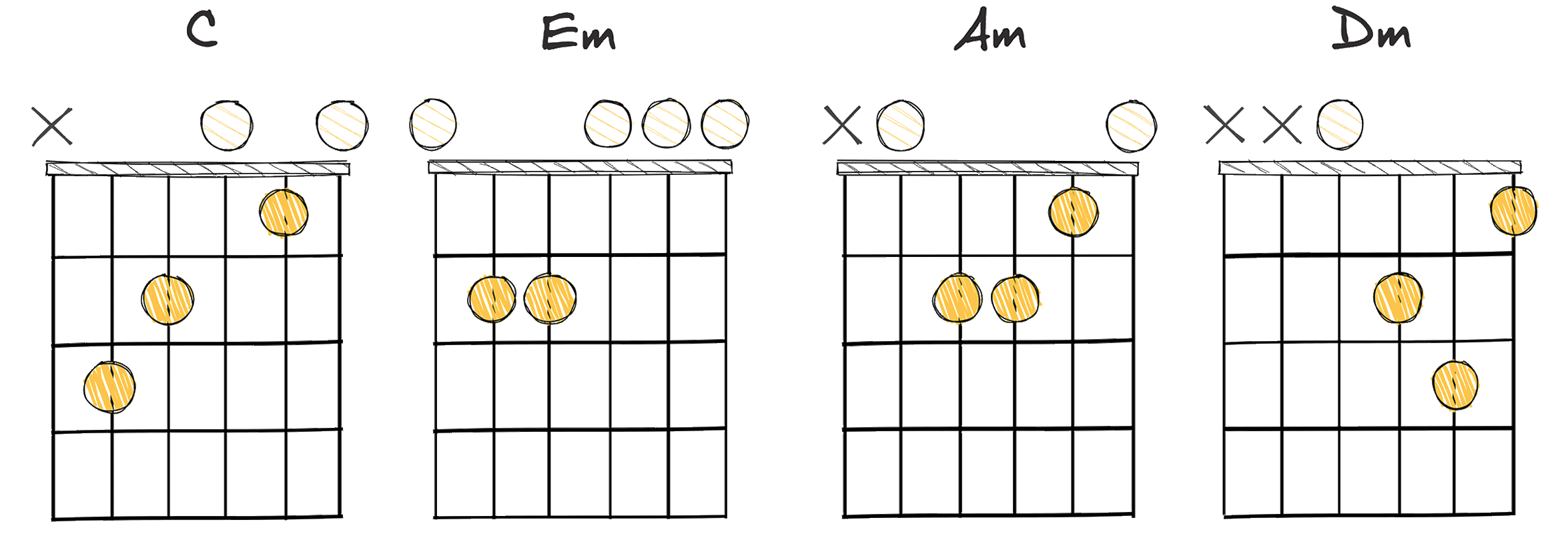
Bossa nova, a style that blossomed in the late 1950s from Brazil, is celebrated for its unique and appealing chord progressions, an essential aspect of its captivating sound.
A notable bossa nova chord progression is the I – iii – vi – ii (1 – 3 – 6 – 2) in the key of C, which translates to C – Em – Am – Dm.
This progression is not a mere whimsical concoction, but it has a profound connection with jazz music, reflecting a colorful palette of emotions and musical thoughts that resonate with the heart of bossa nova.
Such progressions embody the soulful journey back to the musical origin, offering a cyclical resonance and organic flow that’s signature to the genre.
What elevates this progression is its inherent adaptability; its harmonic simplicity allows for flexibility across various musical keys, rendering it an alluring choice for musicians across different genres.
This adaptability has inspired countless artists, reflecting the essence of Brazilian charm.
In terms of playing, this progression is both inviting and intricate, opening doors for exploration that can enthrall both novices and skilled players.
More pointedly, it invites the players to engage with rich minor and major chords, adding depth and texture to their musicality.
The continuous flow of chords like the gentle waves of a Brazilian shore builds a player’s familiarity with chord structures, enhancing their ability to craft and recognize harmonious patterns.
Practicing this progression is like a dance on the guitar fretboard, a delicate balance of pace and rhythm that challenges and delights in equal measure.
While it may pose its share of challenges, mastering this progression opens new horizons in playing, infusing depth and a touch of Rio’s flair into your musical expressions.
It’s an invitation to the golden sands of Copacabana, a musical embrace that connects you to Brazil’s vibrant culture.
The progression’s graceful weave of chords enchants listeners, leading them through unexpected harmonic paths, a quintessential element of bossa nova’s allure.
Embodying bossa nova’s relaxed and romantic vibe, the I – iii – vi – ii progression dances through chords with a grace that paints a vivid and soulful image, transporting you straight to Brazil’s embracing warmth.
Each chord tells a story, weaving a melodic tale that captures the listener, making this progression a valuable addition to the repertoire of those wishing to infuse their music with the charm of bossa nova.
Embracing such progressions is more than a skill enhancement; it’s a journey into the rich cultural and musical legacy that gave birth to bossa nova.
A genre that has carved a special place in the world of music, bossa nova owes much of its timeless appeal to mesmerizing chord progressions like the I – iii – vi – ii, a harmonic dance that continues to inspire and captivate.
I – vi – IV – V (1 – 6 – 4 – 5)
This progression lends a distinctive, tropical Bossa Nova feel.
This progression, I – vi – IV – V, is a typical chord structure in Bossa Nova music, delivering a distinctive, feel-good rhythmic style originated from Brazil. The flow from the major chord to the relative minor and back through the dominant, brings an elegant and sophisticated mood often found in Bossa Nova, making it an ideal method to add a touch of Brazilian flavor to your music.
- Difficulty: Intermediate
- Example: C – Am – F – G (Key of C)
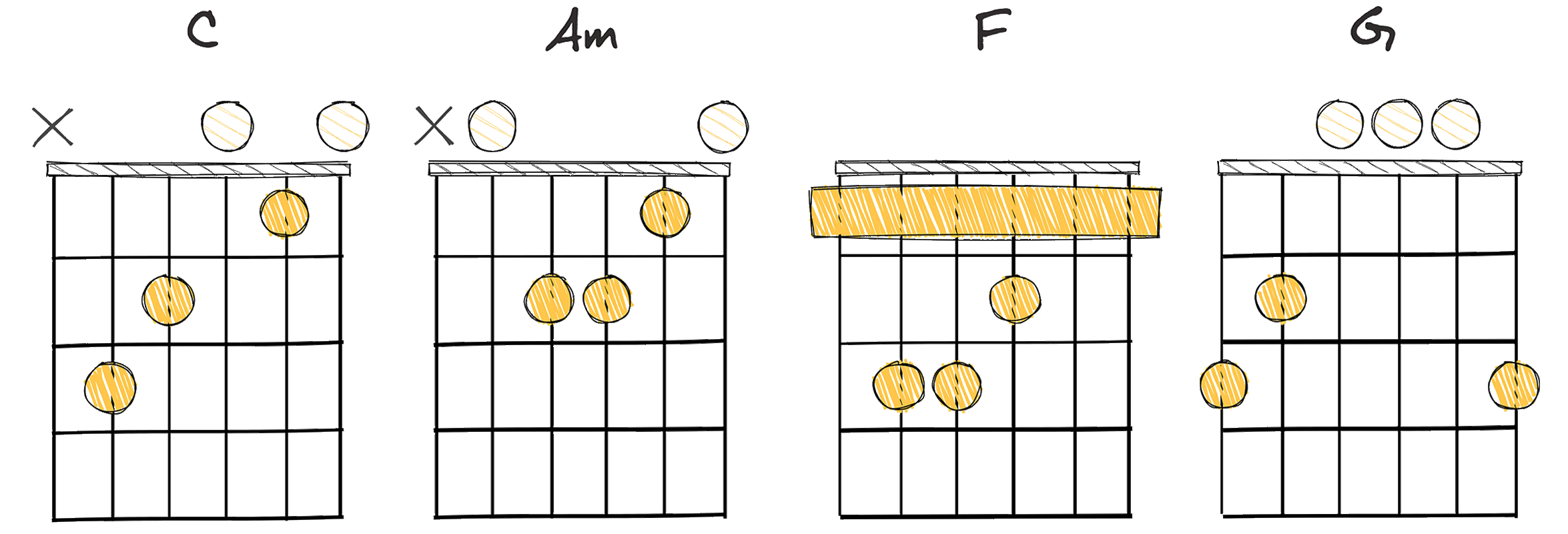
The I – vi – IV – V chord progression holds a significant position in the repertoire of Bossa Nova music, contributing to its distinctive sound.
Often employed in popular songs, this progression is historically associated with the cultural and musical renaissance in Brazil during the late 1950s and early 1960s – a period when Bossa Nova was born.
Behind this progression, there’s a rich heritage of Brazilian musicians seeking to incorporate elements of jazz and samba into a new and exciting musical style.
The I – vi – IV – V progression can be described as intermediate in terms of technical difficulty, requiring a grasp of both basic and more advanced chord shapes.
To illustrate, in the key of C this sequence would be C – Am – F – G.
This progression has featured prominently in various Bossa Nova classics, providing them with a unique musical color that captures the essence of Brazilian culture and lifestyle.
With its origins rooted in traditional samba patterns, the I – vi – IV – V progression has evolved to be a staple in Bossa Nova music, continuing to inject a sense of exotic flavor even in contemporary compositions.
This trend of using the I – vi – IV – V progression in Bossa Nova compositions can be traced back to the genre’s need to distinguish itself from other Latin American music styles – possessing a unique harmony that’s rich in jazz influences.
However, the simplistic beauty of the I – vi – IV – V progression lies not only in its musical arrangement but also in its ability to evoke a diverse range of emotions.
It has a distinctive ability to convey a sense of relaxation, subtly echoing the laid-back atmosphere of Brazil’s beachside cityscapes where Bossa Nova was born.
Mastering this progress will undeniably add a distinctive touch of Brazil to your music, making it more vibrant and soulful, radiating the Bossa Nova vibe.
Therefore, incorporating this chord progression in song compositions and performances can provide an authentic Bossa Nova feel, promoting the continual relevance and popularity of this iconic Brazilian music style.
The intermediate-level difficulty of the I – vi – IV – V progression also offers an engaging challenge to musicians looking to explore the Bossa Nova genre and fortify their skillset.
The I – vi – IV – V progression is ultimately a testament to the enduring influence of Bossa Nova, and its unique charisma that has captivated audiences around the globe.
iii – IV – ii – I (3 – 4 – 2 – 1)
Embrace Brazilian vibes with this mesmerizing bossa nova progression.
This progression is a typical Bossa Nova sequence, incorporating the tense, suspended tones inherent to the genre. The iii-IV-ii-I (3-4-2-1) movement introduces a sense of smooth transition and melancholic feel, a signature characteristic of the uniquely Brazilian style.
- Difficulty: Intermediate
- Example: Em – F – Dm – C (Key of C)
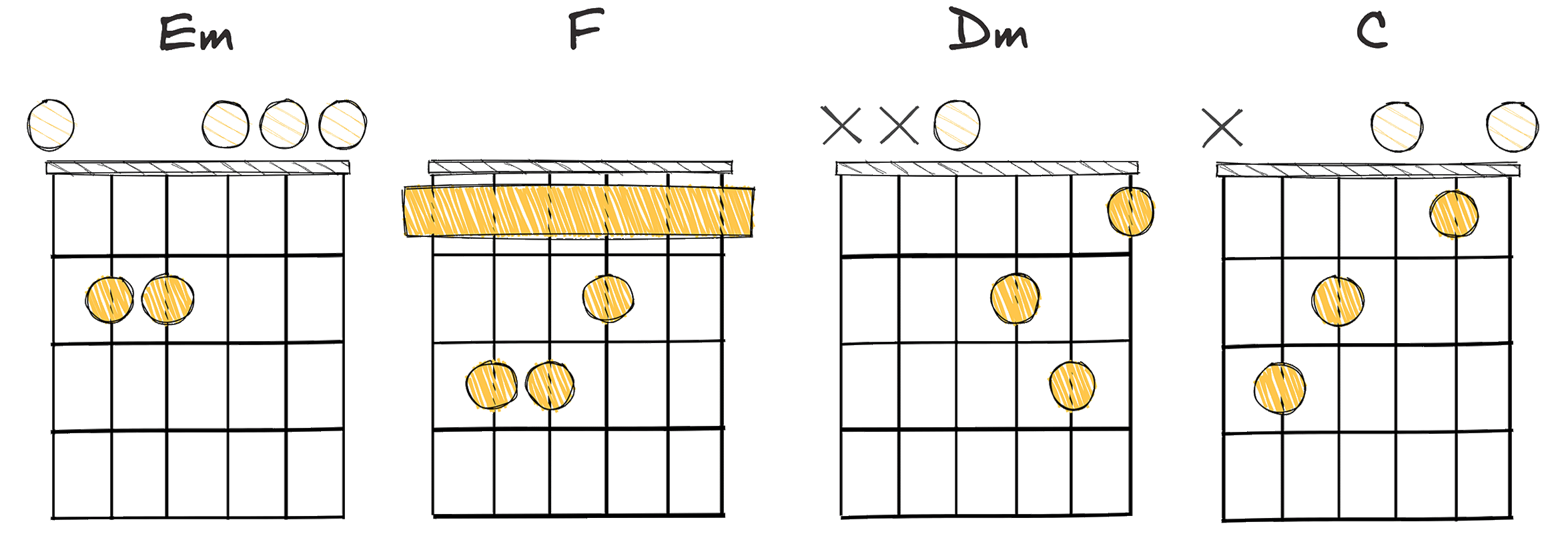
The iii-IV-ii-I chord progression in bossa nova music is a characteristically intriguing yet robust sequence that truly captures the essence of this iconic Brazilian style.
It’s intermediate level of difficulty offers a sense of challenge and exploration for guitarists and composers familiar with regular chord progressions and are looking to broaden their horizons.
Despite its relative complexity, the iii-IV-ii-I progression is a modification of the more basic ii-V-I progression, and is therefore an approachable place to start for those venturing into bossa nova’s harmonic intricacies.
Its historical origins can be traced to the heart of Brazil, where bossa nova was born.
This specific progression carries an undeniably authentic feel that has proven to be perennially popular amongst bossa nova enthusiasts globally.
The beautiful complexity of the iii-IV-ii-I progression truly echoes the intricate nature of bossa nova, weaving an intricate musical tapestry that speaks to the genre’s innovative spirit.
Supporting this sentiment is the progression’s sense of unpredictability and tension; the iii chord is traditionally a minor chord, which instills a sense of melancholy before the major IV chord breathes a brighter air into the progression.
The tension then resolves beautifully with a transition to the ii and then the I chords, culminating in a delightful resolution that showcases the full range of emotional depth that can be achieved within a chord progression.
The iii-IV-ii-I progression doesn’t alienate those with intermediate knowledge of guitar or piano, meaning it’s a perfect technique to employ for those eager to progress their abilities.
This chord progression is versatile and can be found in numerous bossa nova compositions.
The iii-IV-ii-I progression is more than just notes on a staff; it’s an integral component of the bossa nova ethos—a testament to the genre’s innovation and the artists who championed its distinctive sound.
In essence, to master the iii-IV-ii-I progression is to gain an invaluable insight into the complex, layered nature of bossa nova, embarking on a journey towards a deeper understanding of the genre’s signature sound.
It’s vital to remember that learning and perfecting this progression is a process, and one that requires patience and dedication.
However, the musical rewards and sense of accomplishment far outweigh the initial challenges.
Working through the intricacies and nuances of this progression will undoubtedly strengthen your understanding of bossa nova, allowing you to channel the warmth, rhythm, and spirit that it is renowned for.
The iii-IV-ii-I progression in bossa nova music is significantly more than a sequence of chords—it’s a musical roadmap that charts a course toward the heart of one of Brazil’s most treasured musical traditions.
And in doing so, you’ll be aligning yourself with a rich lineage of musicians who have sought to encapsulate the beauty of Brazilian culture through their compositions, delivering captivating interpretations that continue to captivate audiences worldwide today.
I – IV – bVII – V – I (1 – 4 – b7 – 5 – 1)
A quintessential Bossa Nova progression that brings sultry Brazilian vibes.
The I – IV – bVII – V – I progression in C major creates a dynamic musical journey. The opening minor chord adds a touch of melancholy, while the subsequent major chords inject hope and expansion. The return to the minor i chord at the end brings closure, but with an introspective twist. This progression’s interplay of major and minor chords provides a textured soundscape that can evoke a wide range of emotions.
- Difficulty: Intermediate
- Example: C – F – Bb – G – C (Key of C)

When examining the chord progression: I – IV – bVII – V – I (also written as 1 – 4 – b7 – 5 – 1) in the context of alternative rock music, a profound investigation unveils its distinctive features and importance in shaping the genre’s unique sound.
The progression is not initially accessible to novices, but with dedicated practice, those at an Intermediate level and above often discover it offers a refreshing pathway to create gripping melodies.
The C – F – Bb – G – C progression, corresponding to I – IV – bVII – V – I in the key of C major, encapsulates the raw and poignant essence of alternative rock’s emotional intensity.
This sequence of chords graces numerous seminal tracks within the genre, infusing songs with an adventurous and eclectic resonance.
This recurrence of the progression throughout the genre emphasizes its integral role in shaping the alternative rock sound.
It provides a solid backbone while allowing for artistic interpretations that maintain the genre’s edgy and dynamic appeal.
The progression serves as a musical trademark, swiftly summoning the rebellious spirit that alternative rock is celebrated for.
Certain characteristics of alternative rock involve exploring daring chord patterns and resolutions, in a manner that might defy classical norms.
This chord progression, along with others in the genre, often pushes the boundaries of conventional Western music theory – a testament to alternative rock’s innovative and diverse sonic vocabulary.
Interestingly, the progression’s structure may hint at some classical influences, but its usage in alternative rock adds unexpected twists that set it apart, bestowing it with that unique rock flair.
Attempting to play the C – F – Bb – G – C progression can guide musicians toward a deeper understanding of the alternative rock sound and its connection to both raw emotion and technical finesse.
Experimentation with these chords, their voicings, and their effects on rhythm and melody is vital in adding an authentic rock vibe to one’s compositions.
vi – V – IV – iii (6 – 5 – 4 – 3)
A classic Brazilian beat infusing a sultry, soft Bossa Nova vibe.
This chord progression offers a captivating blend of melancholy and hope, essential to the emotional palette of Bossa Nova music. The vi – V – IV – iii progression provides a descending sequence which adds an airy, relaxed vibe, typical of the scenes and moods associated with Brazilian music.
- Difficulty: Intermediate
- Example: Am – G – F – Em (Key of C)
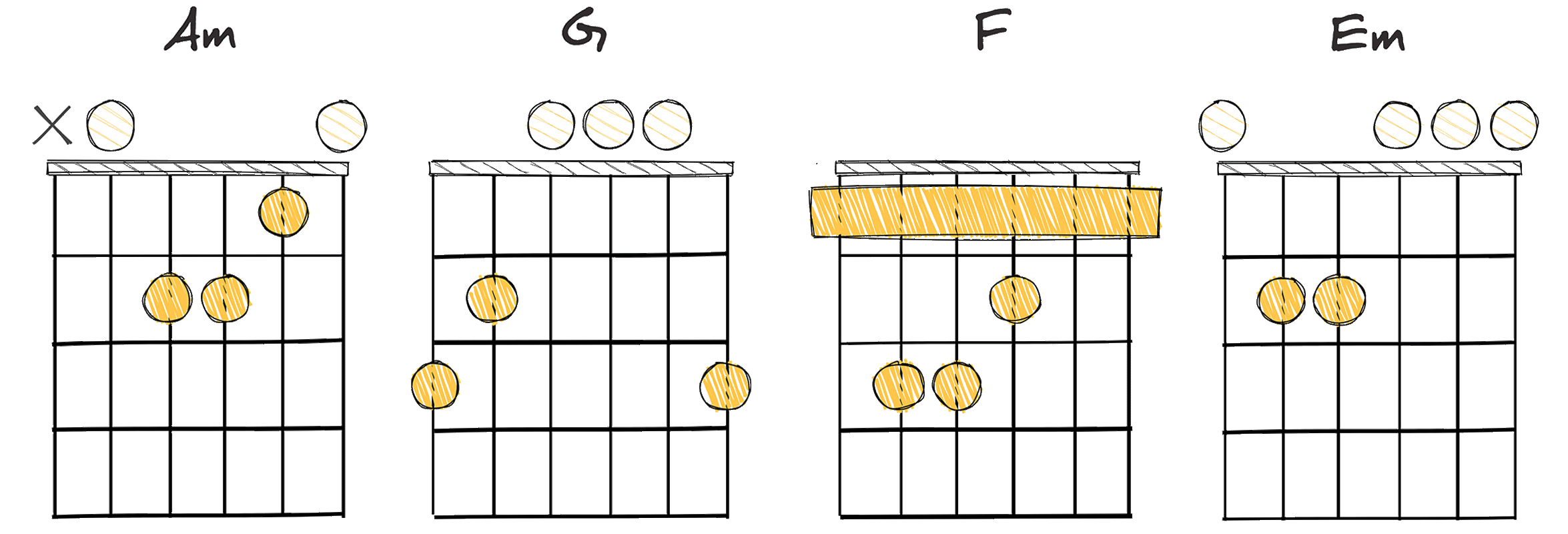
The vi – V – IV – iii (6 – 5 – 4 – 3) progression, or in the key of C, Am – G – F – Em, is a fascinating piece of music theory deeply embedded in the rhythmic styles of bossa nova.
The distinctive rhythm and vertical harmonic structure, particularly reflective of the progression, give it an intimate and expressive feeling, characteristic of the genre’s emotive nature.
Originating from the old samba patterns and with a pinch of jazz harmony, this progression establishes an intriguing bridge between traditional and modern Brazilian music.
Historically, the vi – V – IV – iii progression broke boundaries within the fusion of Brazilian rhythms and jazz influences, mutually enhancing the beauty and complexity of each style.
This progression’s historical significance expanded the genre’s creativity, allowing for innovative musical exploration within the realm of bossa nova.
Notably, it sparked a wave of diversification and uniqueness within the genre, embracing the musical innovations of the time.
Because of its inherent intricacy, this progression was more suited to intermediate and advanced musicians.
The blending of notes creates a rich tapestry of sound that requires a certain degree of proficiency to play accurately and fluidly.
Even if the structure may seem challenging at first, musicians have embraced it because it offers a rare opportunity to experiment with multiple tonal possibilities.
The beauty of this chord progression also lies in its versatility.
Among its popular iterations, it can be found in songs from other genres like pop and rock, where it continues to inspire melodies with its captivating warmth and tonal variety.
The vi – V – IV – iii (6 – 5 – 4 – 3) progression is thus firmly rooted in the music history, demonstrating the synergies between genres and the intrinsic value of harmonic experimentation.
IV – V – iii – ii (4 – 5 – 3 – 2)
Brazilian beats meet jazz harmony in this unique progression.
This four-chord progression creates a feel-good, rhythmic mood typical of Bossa Nova music, reflecting its Brazilian roots. It starts from the subdominant (IV), moves to dominant (V), transitions smoothly to the mediant (iii), and resolves to the supertonic (ii), resulting in a dramatic yet soothing sound.
- Difficulty: Intermediate
- Example: F – G – Em – Dm (Key of C)
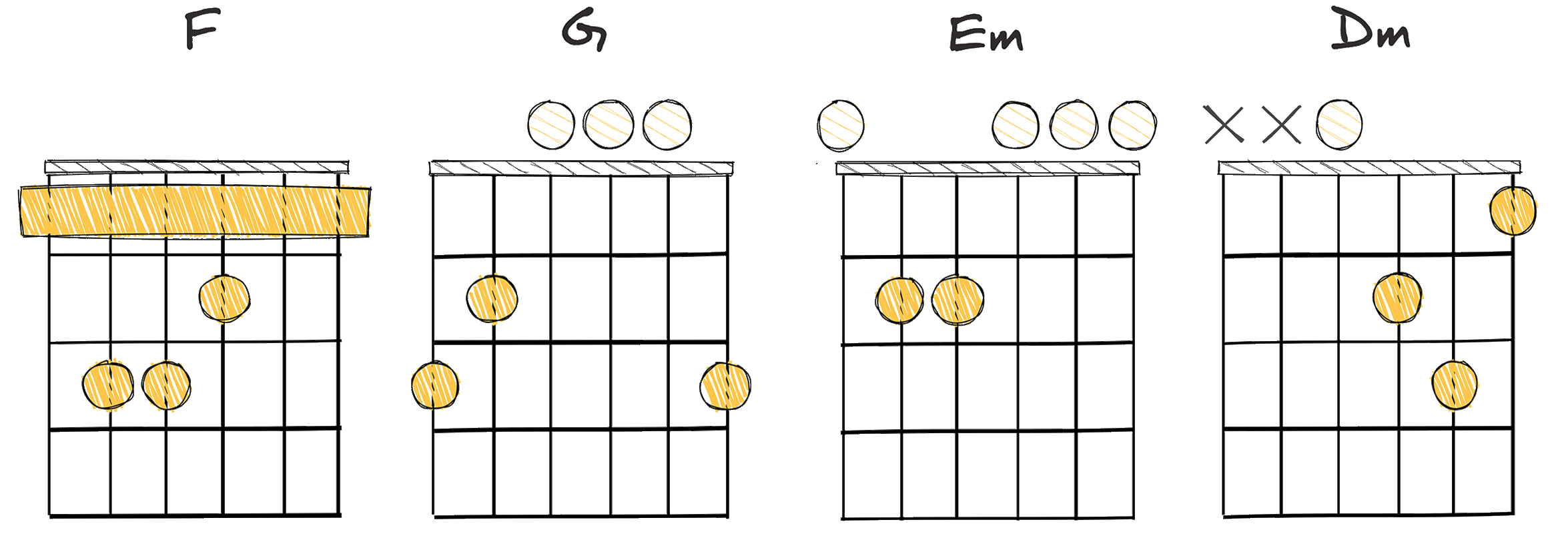
The Bossa Nova chord progression of IV – V – iii – ii (4 – 5 – 3 – 2) or F – G – Em – Dm in the key of C, is an intermediary chord progression and great way to experiment with Bossa Nova, a music genre that hails from Brazil.
Bossa Nova, rooted deeply in Brazil’s culture, came into existence during the late 1950s and early 1960s as an offshoot of samba, morphing traditional Brazilian rhythms and modern jazz harmonies to create a fresh, distinctive sound.
The marked syncopation of the rhythm, along with the lush, intricate melodies, are signature characteristics of Bossa Nova music.
IV – V – iii – ii (4 – 5 – 3 – 2) is an intermediate chord progression sprinkled throughout Bossa Nova music, providing a stepping stone for musicians to delve deeper into the genre.
By experimenting with this particular progression, music makers can concurrently challenge their familiarity with chord progressions and explore the unique sounds and emotions conveyed through Bossa Nova music.
Bossa Nova’s evolution and widespread popularity can be largely attributed to famous artists such as Antonio Carlos Jobim and João Gilberto, known as the pioneers of the genre.
The IV – V – iii – ii progression, despite its moderate complexity, manages to capture the essence of these artist’s music and the heart of the Bossa Nova genre.
Bossa Nova, coupled with its inherent complexity and rhythmic dynamics, can be fairly challenging to play accurately, even with a progression that is considered intermediate.
However, with practice and understanding, the IV – V – iii – ii progression can be used to achieve a rich, gorgeous sound with layered harmonies that are synonymous with Bossa Nova music.
As musicians grow more comfortable with this chord progression, they can begin to manipulate it, adding their own individualistic twists and inventing new sounds within the Bossa Nova genre.
While Bossa Nova has spread globally, influencing music worldwide, its heart remains in Brazil, visible in its frequent and purposeful usage of traditional Brazilian chord progressions like IV – V – iii – ii.
I – vii° – vi – V (1 – 7 – 6 – 5)
Bossa Nova’s subtle tension-resolution, adding Brazilian elegance to a melody.
This chord progression, I – vii° – vi – V or 1 – 7 – 6 – 5, is frequently found in Bossa Nova music, infusing pieces with a uniquely Brazilian flavor. It creates a distinctive harmonious cycle that’s often used to build the atmospheric, sultry soundscapes typical of the genre.
- Difficulty: Intermediate
- Example: C – Bdim – Am – G (Key of C)
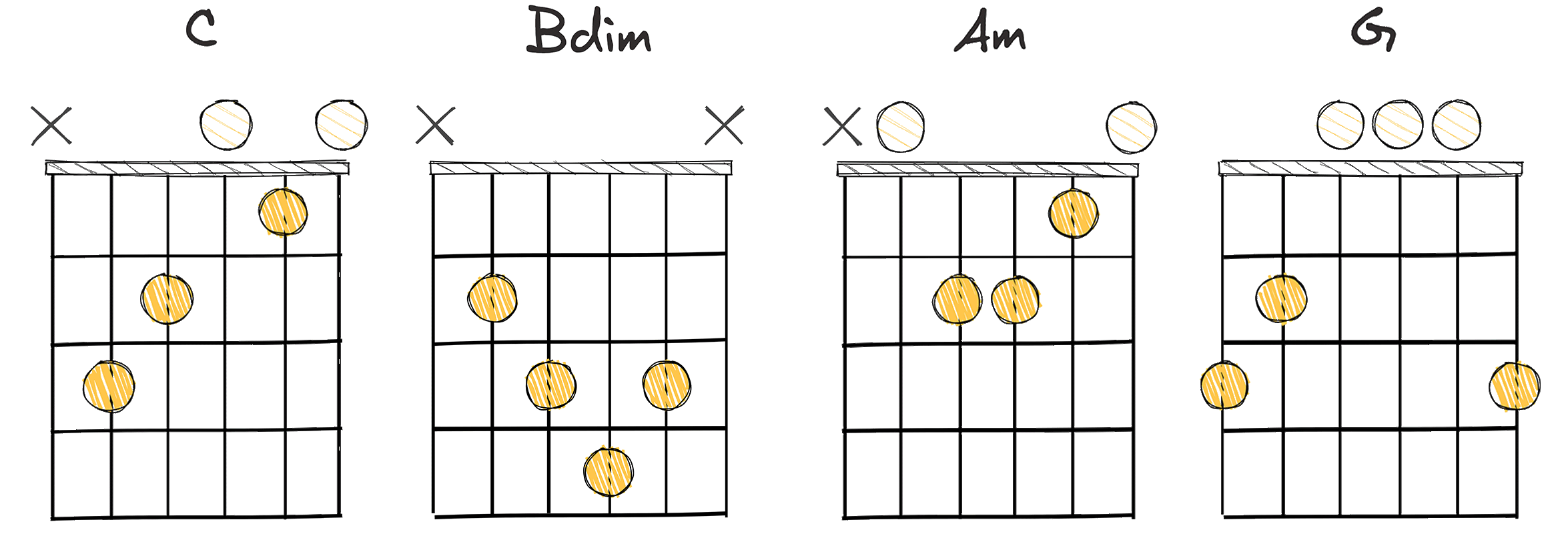
The Bossa Nova chord progressionI – vii° – vi – V (1 – 7 – 6 – 5) is a compelling and subtly intricate sequence often seen in a number of notable compositions in the genre.
Intermediate level musicians are likely to find this progression fascinating and slightly challenging, but certainly manageable with a bit of practice.
The progression, particularly in the key of C, would follow this pattern: C – Bdim – Am – G.
These chords offer rich harmonies and unique tonal shifts, creating an evocative musical atmosphere characteristic of the Bossa Nova style.
It’s interesting to consider the history of this progression, as it gives us insights into its distinct artistic influence in Bossa Nova music.
This progression possibly emerged from unique stylistic melding of traditional Samba music with cool, urban jazz influences in mid-20th century Brazil.
When played in Bossa Nova compositions, this progression often brings with it an undercurrent of tension and release.
This dynamic balance speaks to the genre’s roots in jazz and the improvisational creativity it encourages.
It’s also worth noting that the I – vii° – vi – V progression lies at the heart of the distinct tonality of the Bossa Nova sound.
When a listener encounters this progression in a Bossa Nova track, they are immediately transported to the relaxed and leisurely atmosphere of Brazilian beachfront nightlife.
I – iii – vi – IV – ii – V – I (1 – 3 – 6 – 4 – 2 – 5 – 1)
This progression infuses melodic Brazilian rhythms into your compositions.
The I – iii – vi – IV – ii – V – I progression in C major creates a balanced harmonic journey that weaves through major and minor chords. The transitions between the chords form a dynamic ebb and flow, evoking emotions that vary from hopeful to contemplative. This graceful sequence returns satisfyingly to the tonic, encapsulating a rich and versatile musical landscape.
- Difficulty: Intermediate
- Example: C – Em – Am – F – Dm – G – C (Key of C)
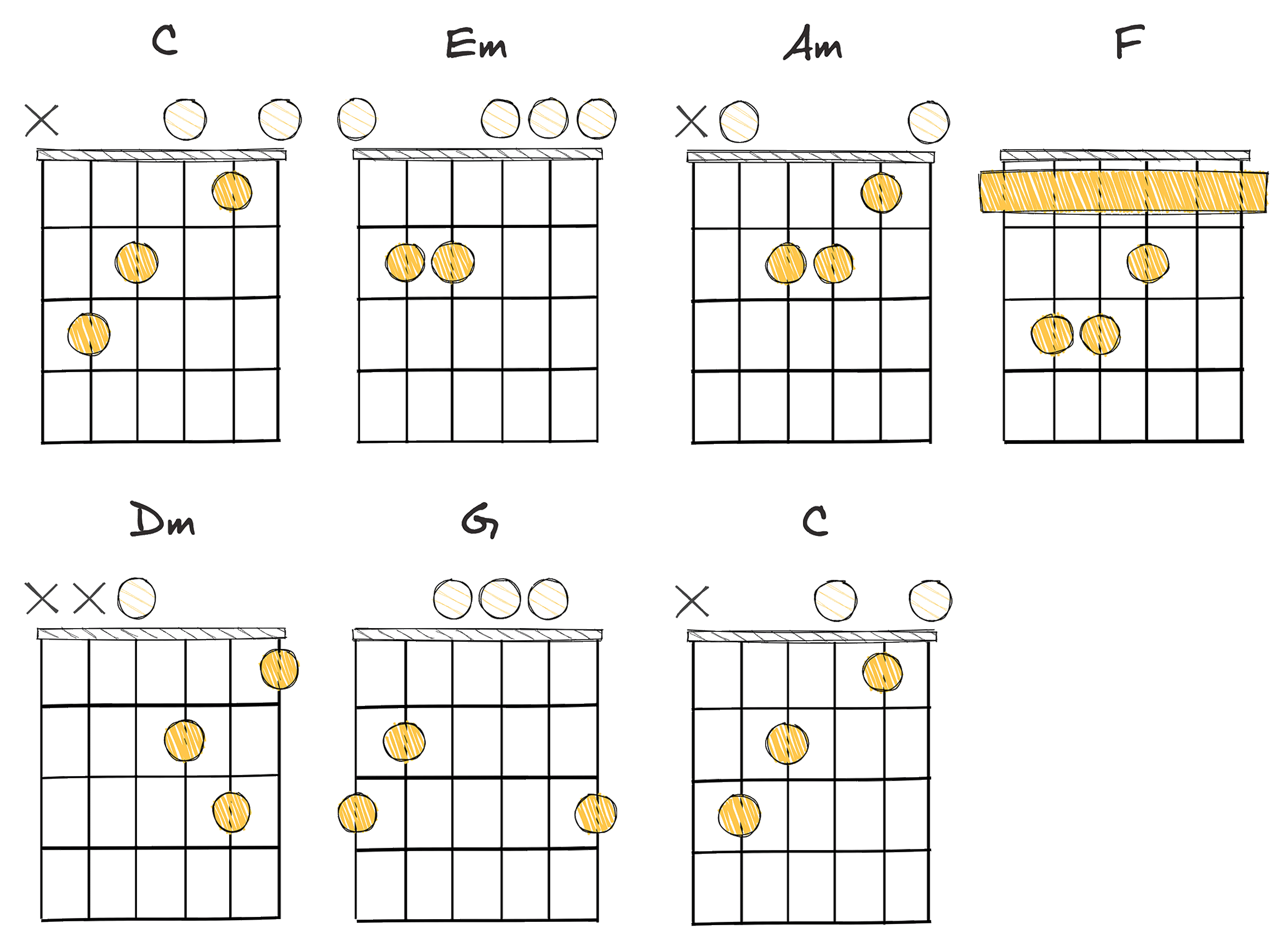
The I – iii – vi – IV – ii – V – I (1 – 3 – 6 – 4 – 2 – 5 – 1) chord progression is an essential feature of a musical style that transcends genres, finding its roots in classical music and resonating through contemporary pop.
Spanning centuries, this progression has proven to be timeless, fusing a seamless balance between consonance and dissonance, while offering a harmonic journey filled with emotional depth.
This chord progression unfolds in the key of C major as C – Em – Am – F – Dm – G – C, a sequence that has graced numerous compositions across various musical traditions.
Known for its lyrical beauty and harmonic grace, this progression serves as a foundation for creating music filled with elegance, serenity, and complexity.
The chord progression I – iii – vi – IV – ii – V – I is a critical ingredient in many musical styles, weaving a harmonic tapestry that enriches the overall structure.
By meticulously shifting between major and minor chords, an enchanting melodic framework is crafted, leading to a sound that’s both universal and personal.
The transition between the chords creates a nuanced contrast, engaging the listener’s ear through its dynamic and harmonic shifts.
From an instrumentalist’s viewpoint, this chord progression can be both invigorating and challenging, offering endless avenues for exploration.
The beauty lies in smoothly navigating through these seven chords, maintaining a flow that resonates with the music’s inherent rhythm and melody.
This I – iii – vi – IV – ii – V – I progression invites an immersive and fulfilling exploration of melodic and harmonic nuances.
The sequence spends thoughtful time on each chord, allowing a natural evolution that builds anticipation and harmonic interest.
Its expressive quality and structural integrity make it adaptable to a multitude of musical moods and atmospheres.
The progression, encompassing both major and minor chords, opens doors for a wide array of emotional expressions within the music.
Its universality and adaptability make it a versatile progression that resonates with a diverse audience.
Despite its intricacy, it often conveys a sense of organic simplicity, characteristic of timeless compositions.
Often accompanied by arpeggiated patterns or flowing melodies, this chord sequence adds to both the harmonic richness and intrinsic character unique to various musical styles.
For musicians seeking to delve into different genres, mastery of this chord progression offers an unending wellspring of creative exploration, serving as a gateway to understanding the profound complexity of music.
The I – iii – vi – IV – ii – V – I chord progression beautifully embodies the architectural grace of music, underlining its capacity to stir a vast spectrum of emotions through its vibrant and beguiling melodies.
V – IV – I – vi (5 – 4 – 1 – 6)
Experience the relaxed, jazzy vibe of authentic Brazilian Bossa Nova.
This V – IV – I – vi progression provides a subtle beauty and captivating rhythm synonymous with Bossa Nova music. Known for its melancholic yet soothing sound, this progression combines dominant, subdominant, and tonic chords along with a minor chord, creating the distinctive, heart-tugging vibe that Bossa Nova is celebrated for.
- Difficulty: Intermediate
- Example: D – C – G – Em (Key of G)
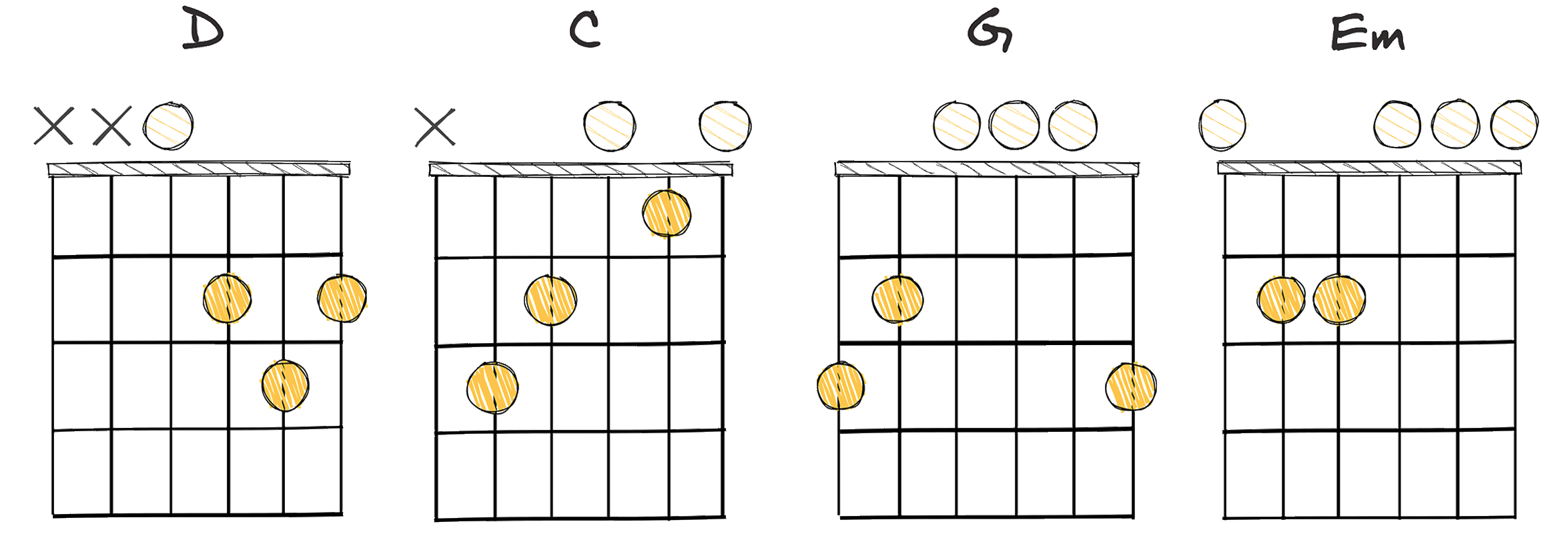
The V – IV – I – vi chord progression, represented in the Key of C as D – C – G – Em, is frequently used in the genre of Bossa Nova to infuse a touch of Brazil into a piece of music.
This progression, while not necessarily native to the Bossa Nova genre, is often used to bring about a unique, sultry sound indicative of this popular Brazilian music style.
Furthermore, the V – IV – I – vi progression is perfect for creating the kind of harmonic interest that bosses nova music is renowned for.
The progression is described as Intermediate level, which means while it’s not the easiest to master, a bit of patience and practice can allow any musician to smoothly incorporate it into their music.
For the uninitiated, Bossa Nova, translating to “new trend,” is a Brazilian style of music that combines elements of samba and jazz.
The progression’s origins are rooted deeply in the heart of this fusion, creating a harmonic blend of sounds that is distinctively representative of Bossa Nova.
This progression, with its relaxed, laid-back vibe, complements the effortlessly cool style of Bossa Nova perfectly.
If dissected, one can see that the progression involves going from the dominant (V), to the sub-dominant (IV), resolving at the tonic (I), and finally moving to the relative minor (vi).
As a musician, manipulating these chords’ rhythm and timing can result in a multitude of variations, offering endless possibilities for musical explorations within the framework of this progression.
Although it is common within this genre, the V – IV – I – vi progression is by no means limited to Bossa Nova music.
It has crossed over into various other genres as well, making it versatile and highly adaptable.
Furthermore, learning this progression can also serve as a great springboard for understanding other aspects of music theory and chord progression.
The beauty of such a progression lies not only in its unique sound but in the subtle complexity and harmonic possibilities it presents.
From musicians to listeners, the V – IV – I – vi progression continues to enchant all, adding that distinctive touch of Brazil to music.
vi – ii – V – I (6 – 2 – 5 – 1)
Sultry, classic chord progression embodying the nostalgia of Bossa Nova.
The vi – ii – V – I progression is a popular chord sequence in Bossa Nova music, known for its rhythmic subtlety and rich harmonies. This progression typically lends a soulful, laid-back character to music, capturing the vibrant yet sensual ambiance inherent to the Brazilian cultural soundscape.
- Difficulty: Intermediate
- Example: Am – Dm – G – C (Key of C)
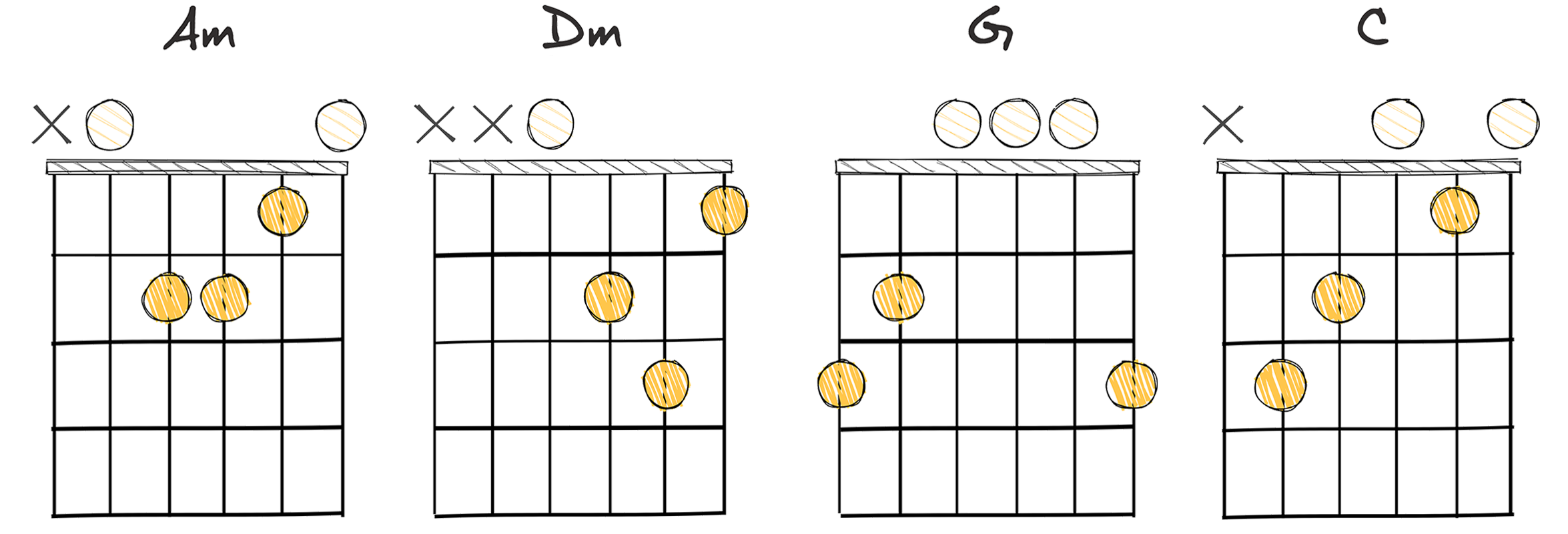
The Bossa Nova chord progression of vi – ii – V – I (6 – 2 – 5 – 1) is an incredibly popular harmonic sequence that can be seen in many pieces of music across various genres but it is particularly prominent in the captivating rhythms of Brazilian music.
Originating in the seaside of Brazil in the 1950s, this chord progression, like most others in Bossa Nova, is an innovative blend of traditional Brazilian Samba rhythms and cool, modern jazz harmonies.
In essence, this progression, Am – Dm – G – C in the key of C, begins with the sixth chord (vi) of the diatonic scale, which is minor, followed by the minor two chord (ii), then moves to the dominant (V), and finally resolves to the tonic (I).
Musicians of intermediate skill level can enjoy the richness of this progression in various ways.
It has a certain cycle to it that gives it a really smooth, cohesive feel.
Understanding and getting comfortable with the vi – ii – V – I progression can really help when trying to capture the sophisticated, breezy feel of Bossa Nova music.
Bossa Nova’s fundamental nature is rooted in a constant exploration of rhythmic and harmonic possibilities.
And this chord progression brilliantly captures this philosophy with the tetrad of the 6th, 2nd, 5th, and 1st step of the scale working in harmony to produce that soulful Bossa groove.
When playing this progression, the use of extended and altered chords adds an extra layer of richness and complexity.
One of the main reasons why this progression is so adored by musicians is due to its versatility and the interesting tension and release dynamic it creates.
The progression moves the music forward, creating anticipation with the ii chord and V chord, then gratifyingly resolves to the stable I chord, producing a very pleasing cycle of tension and release.
This sense of movement and the resolutions it creates is really a trademark sound in jazz and Bossa Nova music, which explains why this progression is used so frequently.
Also, the progression is easy to remember and implement as it follows the circle of fifths, making it approachable and efficient as a songwriting tool for musicians.
The combination of rhythmic patterns, percussive strumming, and this harmonic progression results in a musical style that is distinctive to Bossa Nova.
It’s important to note that while this progression may be intermediate to play, it offers large room for exploration and interpretation, making it perfect for stretching your musical creativity.
So, while the vi – ii – V – I Bossa Nova chord progression is not necessarily unique to the genre, the unique feel and rhythm it is played within this musical context certainly makes it stand out.
This chord progression, like the Bossa Nova style itself, is known for its rich harmonic vocabulary, captivating rhythms, and iconic relaxed yet vibrant mood.
I – IV – vii° – iii (1 – 4 – 7 – 3)
Bossa Nova twist, infusing traditional progression with breezy Brazilian flair.
The I – IV – vii° – iii progression brings a characteristic Latin flair to music, commonly associated with Bossa Nova rhythms. It makes use of a transitioning blend of major and minor chords to provide a smooth, laid-back feeling inherent to Brazilian music styles.
- Difficulty: Intermediate
- Example: C – F – Bdim – Em (Key of C)
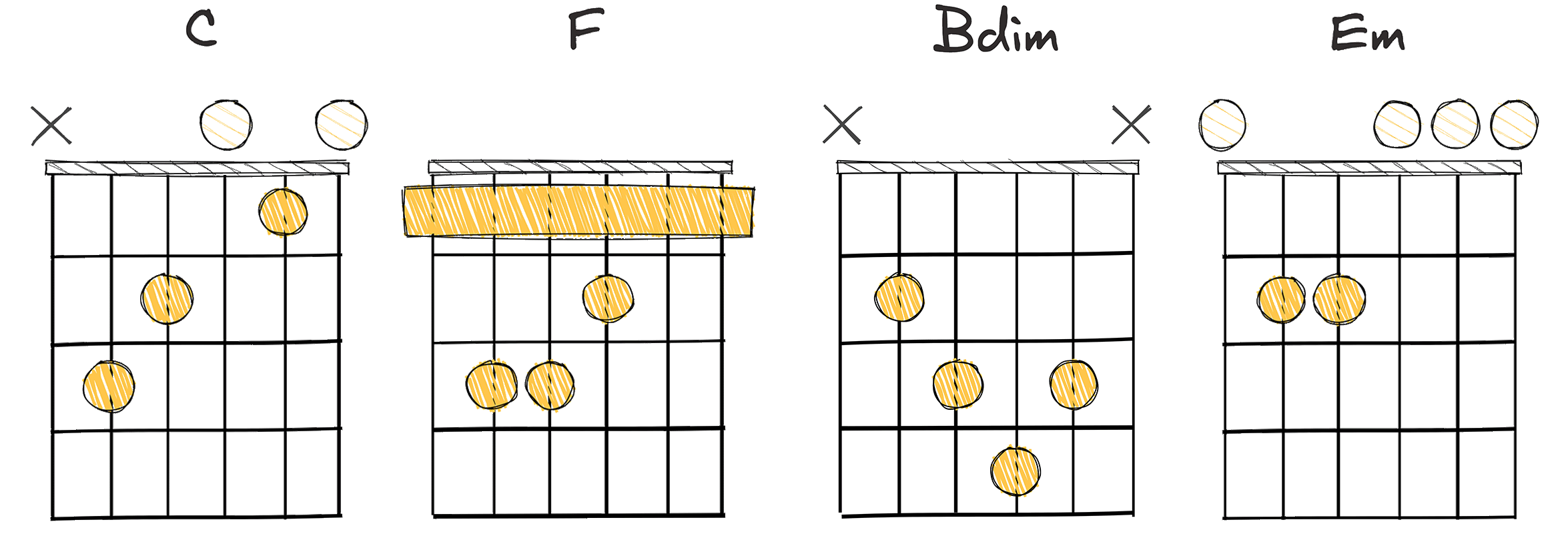
The chord progression I – IV – vii° – iii (1 – 4 – 7 – 3), in the Key of C, translates to C – F – Bdim – Em.
When working with Bossa Nova music, this specific progression adds an undeniable Brazilian touch to your piece.
This chord progression is considered to be of intermediate difficulty to play, but with some practice, it can surely be mastered.
What really stands out about this chord progression is how it creates a smooth transition from the tonic (I), through the subdominant (IV), leading to the diminished seventh (vii°), and landing finally on the mediant (iii).
The use of the diminished seventh chord in this case (Bdim), serves as a beautiful and somewhat surprising transition chord.
It adds a level of complexity and delicious tension before resolving neatly into the Em chord.
This resolution aids in giving Bossa Nova its renowned relaxed, yet rhythmically complex character.
The chord progression I – IV – vii° – iii not only produces a unique sound but it also supports the typical syncopated Bossa Nova rhythm.
The unpredictable harmonic movement that this progression offers is a signature characteristic of Bossa Nova, setting it apart from other genres.
It exposes the listener to a blend of major and minor chords, with the use of a diminished chord introducing an extra layer of sophistication and surprise.
Looking back, Bossa Nova emerged in the late 1950s, fusing elements from samba and jazz, it formed its own distinctive sound with characteristic rhythms and harmonic structures.
This specific chord progression is a testament to that fusion – with its classic dominant-tonic resolutions and the inclusion of jazz’s typical chord extensions, alterations, and secondary dominants.
Ultimately, everything from the selection of chords to the rhythm, arrangement and execution plays a part in creating that distinct Bossa Nova feel.
Learning and mastering this chord progression can greatly serve any musician looking to explore new sounds and genres, and it’s indeed a stepping stone into the intricate and captivating world of Bossa Nova.
This progression, in the right hands, can transform a simple song into an exotic experience, transporting listeners straight to the heart of Brazil’s sandy beaches and vibrant carnival atmosphere.
ii – V – I – IV (2 – 5 – 1 – 4)
A quintessential bossa nova progression lending an exotic Brazilian flavor.
The ii – V – I – IV chord progression is a cornerstone of Bossa Nova music, often creating a tranquil and dreamy soundscape characteristic of this Brazilian genre. It is a smooth, flowing progression that lends itself well to the rhythmic complexities and melodic intricacies of Bossa Nova, making it a valuable addition to any musician’s toolkit.
- Difficulty: Intermediate
- Example: F#m – B – E – A (Key of E)
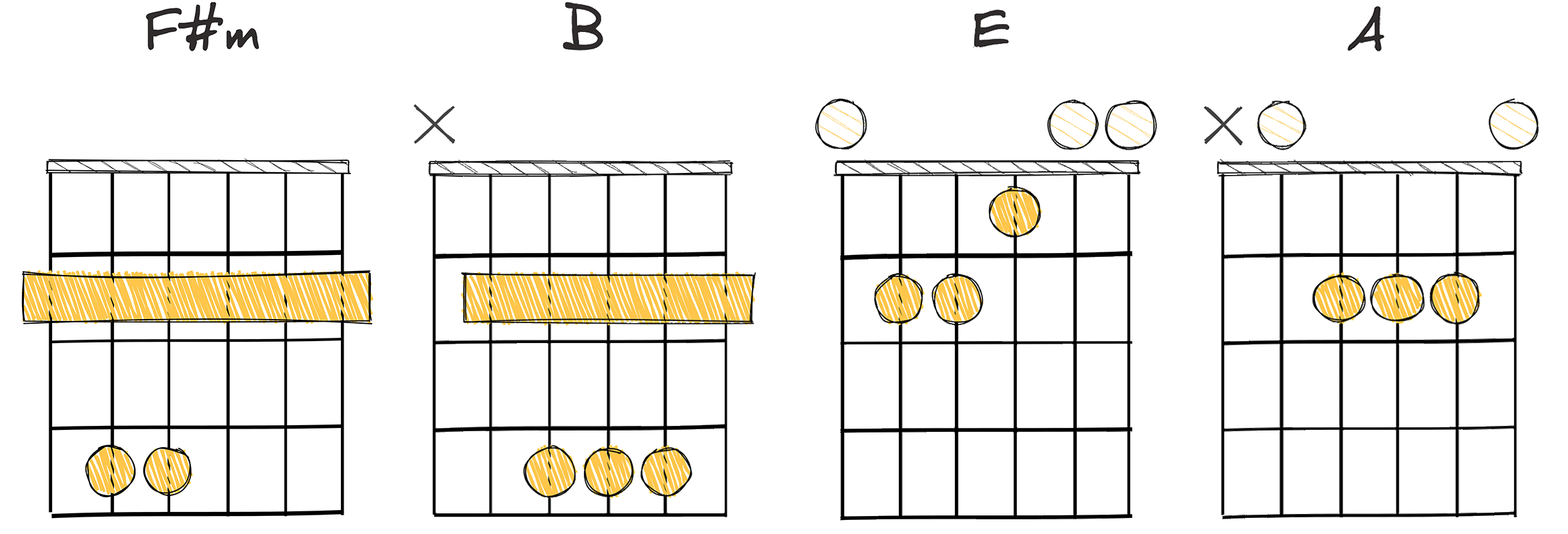
For the uninitiated, the bossa nova genre of music birthed from the cultural melting pot of Brazil provides a rich and diverse tapestry of progressions that can be integrated into a musician’s repertoire.
This exploration will revolve around the ii – V – I – IV progression or F#m – B – E – A in the key of E, and how it is utilized in the enchanting rhythms of bossa nova.
The reverberation of this chord progression is woven through the fabric of bossa nova music; propelling its delicate melodies and intricate rhythms.
This unique mixture of harmonies creates an enchanting musical language that is distinctly Brazilian.
Intermediate-level guitarists can approach this progression with confidence as it combines several familiar chord shapes that only need a little embellishment to recreate those tropical samba-influenced bossa nova rhythms.
It’s far from the simplest progression, but with a little practice – it becomes second nature.
The ii – V – I – IV progression lends itself especially well to the bossa nova genre because its chords offer the perfect balance of tension and resolution.
This chord series is driven by the natural tension created between the ii and V chords, with the I chord offering the sweet relief of resolution before the IV chord reintroduces an element of tension, keeping the music moving forward.
It’s a beautiful cycle that keeps listeners on the edge of their seat, absorbed by the ebb and flow of the chords and the captivating rhythms they generate.
Looking at bossa nova’s history can provide a fresh perspective on the progression.
This genre blends samba rhythms with jazz harmonies that were popularized in the 1950s and 60s.
Great artists like João Gilberto and Antônio Carlos Jobim put Bossa Nova on the musical map with simple yet sophisticated harmonies like our ii – V – I – IV progression, creating a timeless sound that continues to captivate.
The natural simplicity and emotional richness of this chord progression make it an essential tool for composers looking to infuse their music with a bit of Brazil’s musical magic.
Transformative in its charm, this progression allows players to venture into toe-tapping dynamics and romantic wistful melodies that define the bossa nova sound.
Despite its simplicity, the ii – V – I – IV invites more complex embellishments, generating a multitude of tonal colorings that can strengthen a musical piece.
Understanding this progression and using it effectively can fundamentally improve the way you understand bossa nova’s luxuriant harmonic language.
Remember, honing the craft of effectively playing these chords requires time and practice; achieving the ideal balance between strumming rhythm and chord transitions is a challenging yet rewarding pursuit.
I – vi – ii – V (1 – 6 – 2 – 5)
Experience the hypnotic rhythm of Brazil with this chord progression.
This progression is a staple in Bossa Nova music, imbuing a sense of smooth, sunny samba rhythms into any composition. The I – vi – ii – V transit is particularly pleasing to the ear and creates a distinctive, warm resonance associated with Brazilian styles.
- Difficulty: Intermediate
- Example: D – Bm – Em – A (Key of D)
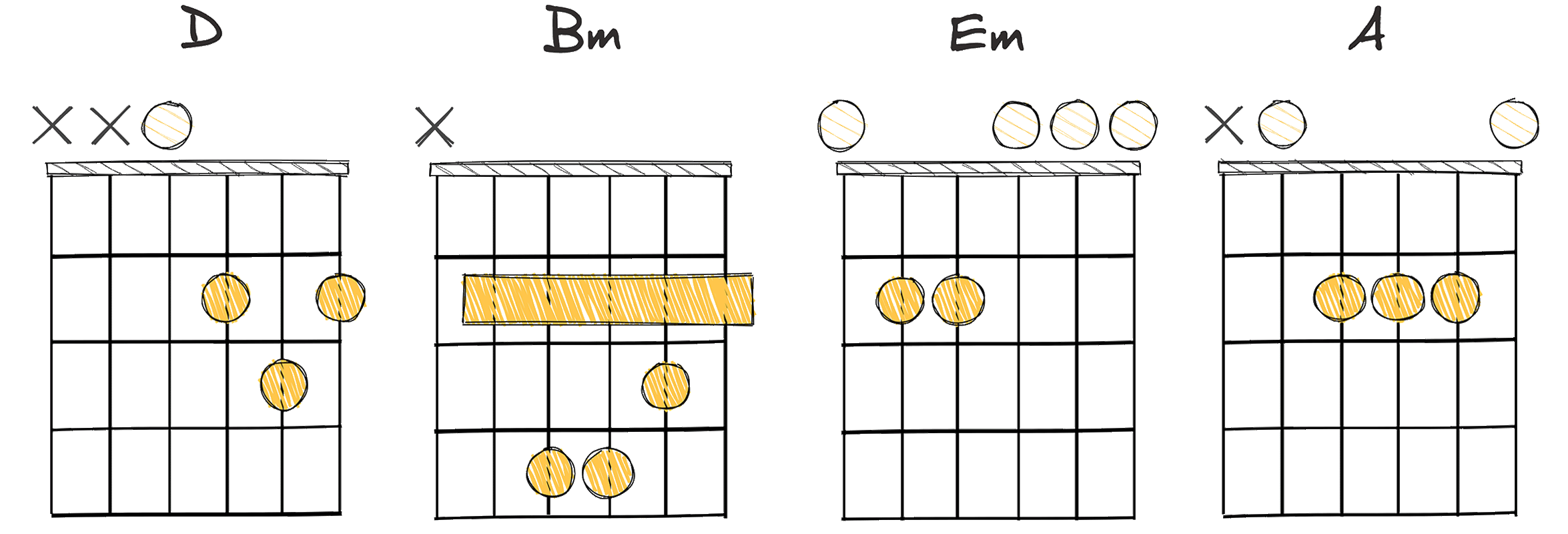
Let’s explore the chord progression using the sequence I – vi – ii – V (1 – 6 – 2 – 5) within the context of Bossa Nova music.
The I – vi – ii – V progression, often viewed as a staple in Bossa Nova, is very much inspired by the jazz genres that distinctly highlight complex harmony.
Presented in the key of C, the progression would look like this: D – Bm – Em – A.
The first chord of the progression, ‘I’ corresponds to D Major.
The next chord in the progression is the ‘vi’ which equates to B minor.
Progressing to the ‘ii’, it shapes into E minor.
Lastly, concluding the progression is the chord ‘V’ or A Major.
Pioneered by some of Brazil’s most talented musicians in the late 1950s, the Bossa Nova genre utilized this I – vi – ii – V progression to contribute to a distinctly rich and sophisticated soundscape that the genre is known for.
The I – vi – ii – V chord progression possesses a smooth, soothing tonality which is greatly desired in Bossa Nova’s lounge-like, laid-back yet complex appeal.
After this chord progression makes its entrance, the harmonious contribution to the overall flow of music adds a desirable complexity to the seemingly simple melody, a characteristic one would undeniably associate Bossa Nova with.
Furthermore, it introduces a dynamic rhythm that compliments the relaxed tempo of a traditional Bossa Nova composition.
As an intermediate chord progression, mastering the I – vi – ii – V progression allows musicians to capture the elegant balance between harmonic sophistication and rhythmic smoothness.
Because of its versatility, this chord progression can be found in various pieces of Bossa Nova music.
I – vi – iii – IV (1 – 6 – 3 – 4)
A harmonic dance, moving like the waves of the sea, making it a choice selection for Bossa Nova compositions and beyond..
The I – vi – iii – IV progression in C major exudes a soothing and introspective quality. The chords C – Am – Em – F flow together, creating a gentle dance that’s both nostalgic and hopeful. It’s a harmonious sequence that feels like a calm breeze, particularly resonant in Bossa Nova, capturing its timeless elegance in a tranquil musical embrace.
- Difficulty: Intermediate
- Example: C – Am – Em – F (Key of C)
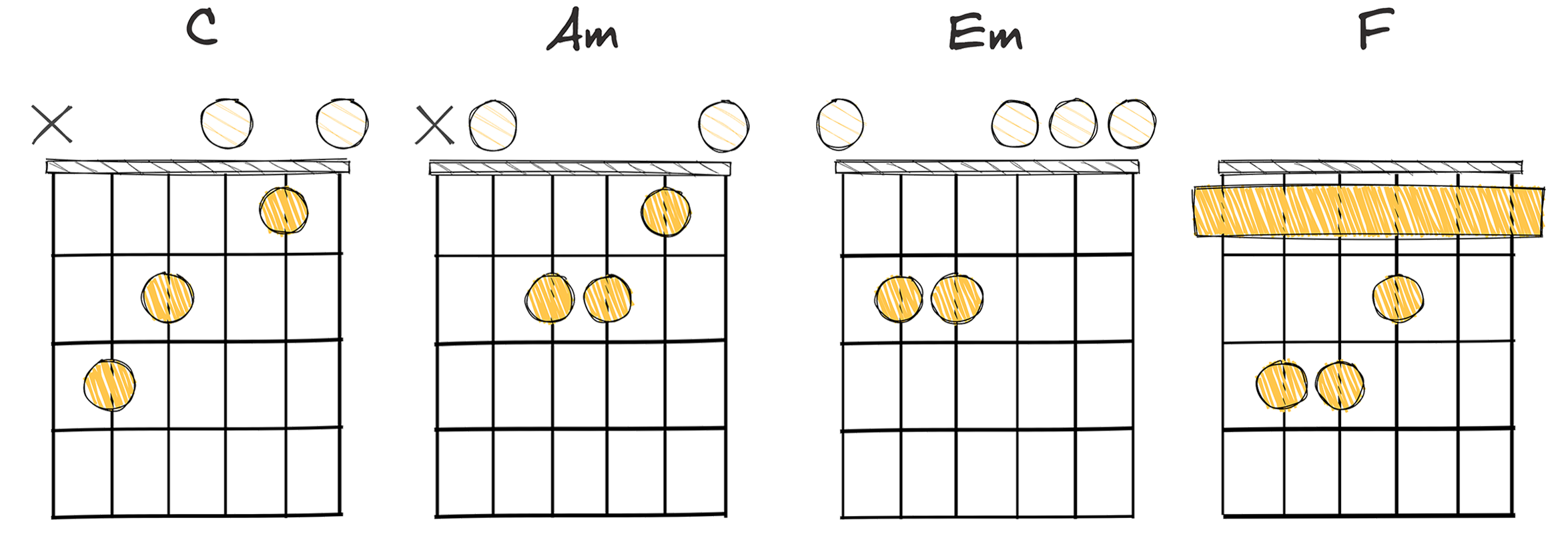
The I – vi – iii – IV chord progression, numerically represented as 1 – 6 – 3 – 4, is a tantalizing sequence found in various genres of music, including the elegant Bossa Nova, a style that flourished in Brazil during the mid-20th century.
In the key of C major, this progression manifests as C – Am – Em – F, adding a rich texture and delicate sway that is often synonymous with Bossa Nova’s calming, rhythmic grace.
This progression, while simple in structure, carries a profound depth that can add an enchanting quality to your musical creations.
The smooth movement from the I chord to the vi, then the iii, and finally to the IV embodies a soft, reflective journey that’s quintessential in Bossa Nova’s narrative approach.
Mastering the I – vi – iii – IV chord progression could be seen as an inspiring step in your musical skills development, ideally fit for those seeking to dive into the soothing waves of Bossa Nova’s harmonic ocean.
Whether on a guitar, piano, or any other harmonic instrument, understanding and applying this chord progression amplifies your versatility, enabling you to capture the gentle breeze of this beautiful genre.
The I – vi – iii – IV progression forms a harmonic dance, moving like the waves of the sea, making it a choice selection for Bossa Nova compositions and beyond.
Its movement creates a lyrical story, providing a sense of musical exploration and resolution that’s woven into the fabric of Bossa Nova’s expressive soul.
A reason for this progression’s resonance lies in the subtle tension and release it crafts within the music, engaging listeners and inviting them into a soothing embrace.
Harkening back to Bossa Nova’s roots, the use of this progression marks a quest for creativity, a departure from conventional sounds, and a venture into a world filled with melody and charm.
The popularity of this progression endures, driven by its inherent melodic allure and harmonic elegance, which transcends not only Bossa Nova but also connects with various other musical landscapes.
The gentle flow and seamless transitions of this progression encapsulate the essence of Bossa Nova, showcasing why it’s so compelling in painting a tranquil scene.
To tap into the full potential of this progression in your compositions, immersing yourself in existing Bossa Nova pieces is key to unlocking its charm and influence on the musical world.
Embarking on the journey with the I – vi – iii – IV chord progression is like stepping into a tropical paradise, rich with Bossa Nova’s natural beauty.
The Bottom Line
Having examined a variety of arrangements, we can discern that these combinations offer a multitude of ways to create dynamic and engaging material.
Regardless of the order of presentation, each sequence delivers a unique perspective and depth that enriches the overall outline.
These diverse setups provide a framework for creativity and flexibility and ensure a balanced approach by providing a different emphasis and focus on each key point.
The drastic changes in order reflect the dynamism of the content, setting a rhythmic pace for the reader, and highlighting the importance of the versatility in structuring thoughts.
We can safely assert that every structure has its merits and can be chosen according to the specific needs of the subject matter.
Whether we follow a traditional sequence or choose a more unconventional route, the goal remains the same: to facilitate understanding and retain the reader’s interest.
Hence, these varied outlines underscore the importance of structure in enhancing and clarifying the content’s impact.
In love with guitars, and gear; expert in all things music! Been writing about guitars for about 5 years and counting. Born in the ’90s. Alma Mater: University of Havana. Always curious, trying to understand the world. #TeamFender



